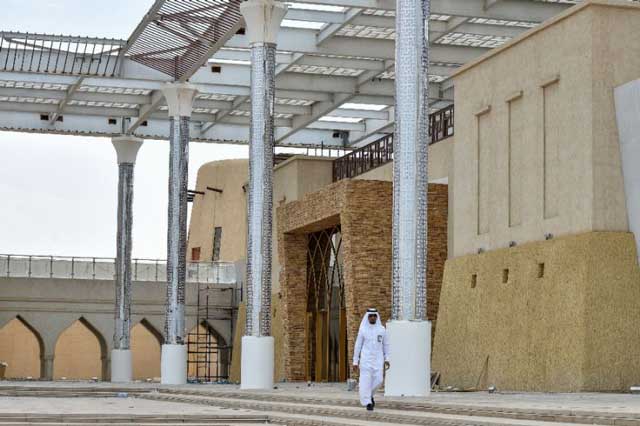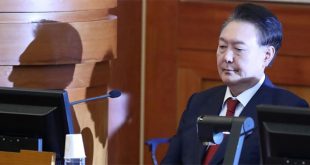
Awamiya, Saudi Arabia | AFP | Strip malls and palm-dotted boulevards stand in the once bullet-scarred old quarter of Awamiya, a Shiite-majority town on Saudi Arabia’s oil-rich eastern coast where the long-planned facelift fuelled deadly clashes.
Until a year ago, Musawara neighbourhood resembled a war zone following skirmishes between militants who chafe under Sunni rule and government forces who sought to tear down the walled area dating back to the Ottoman Empire.
After crushing the revolt, the government pressed ahead with plans to redevelop Musawara, saying its honeycomb of twisting alleys and centuries-old buildings had become a breeding ground for “terrorism”.
Now an expansive plaza flanked by shops has risen from the ruins of an area that has been a flashpoint for protests by the Shiite minority since the 2011 Arab uprisings.
That contrasts with what AFP saw during a government-guided tour of the wasteland in October 2017 — buildings and mosques were constellations of bullet holes and charred vehicles lay strewn across its streets.
“In the area, old and densely populated with narrow lanes… there used to be many security challenges,” the region’s deputy mayor Esam Abdullatef al-Mulla told AFP during a recent press tour organised by the government.
“The revamp was done to convert the area into a cultural attraction.”
But the project, which Mulla said cost around $64 million with an additional cost of $213 million in compensation to residents for hundreds of razed homes, is not just about urban revival.
It is aimed also at what the pro-government Saudi media calls “making extremist thought isolated”.
The development has erased what officials say were militant hideouts and sniper nests. Armoured vehicles still patrol the streets, maintaining a tenuous calm.
Saudi officials appear so confident about their grip on Awamiya that multiple checkpoints and blast-walled barriers encircling the town –- once tightly controlling the movement of residents — are now unmanned, they pointed out to AFP.
– ‘Negation of history’ –
But public resentment still lingers.
“Most of Awamiya people did not visit this new site and they will not,” a Shiite activist told AFP, claiming that most of the land was forcibly seized from residents.
Authorities deny the claims, with Mulla saying most residents supported the redevelopment as their homes had been unsuitable for habitation.
During AFP’s latest visit, the sprawling plaza was largely empty, with only a handful of construction workers milling around the site.
Mulla brushed aside widespread criticism that the redevelopment had erased the neighbourhood’s unique heritage, saying developers had consulted residents to maintain ancient structures, including traditional wells.
“The destruction of the historical centre of Awamiya is both a symbol of the negation of that city’s history, and a negation of Arabia’s pre-modern architecture and old towns more broadly,” said Toby Matthiesen, author of the book “The other Saudis: Shiism, dissent and sectarianism”.
But fear apparently trumps resentment.
Even if they resent the redevelopment, the town’s residents are unlikely to publicly resist amid Crown Prince Mohammed bin Salman’s widening crackdown on dissent.
In April, 37 people, mostly Shiites, were executed in what experts called one of the largest mass executions of the minority sect in the kingdom’s history.
Many of those executed were accused of terrorism after being arrested in connection with the uprisings.
“The execution of 37 people, some of whom were from Awamiya, will fuel fear of the government’s actions, and fuel mistrust of many Shia of the state,” said Matthiesen.
– ‘Carrot and stick’ –
Saudi Arabia’s Shiite community, long marginalised and disparaged as heretics, makes up an estimated 10 to 15 percent of the kingdom’s population of 32 million.
Many community members say they are caught in the rivalry for regional supremacy between the Sunni kingdom and Shiite powerhouse Iran.
Awamiya was home to Nimr al-Nimr, a fiery Shiite cleric and government critic who was executed in 2016 on terrorism charges, sparking widespread outrage and leading to tensions with Iran.
Recent sabotage attacks on Saudi oil tankers off the United Arab Emirates and drone attacks by Yemen’s Iran-aligned Huthi rebels on oil pumping stations in the kingdom have further inflamed regional tensions.
But while upping the ante against Iran, the crown prince has appeared to strike a conciliatory tone towards the kingdom’s Shiites.
He has sought to curb anti-Shiite rhetoric by hardline clerics such as Adel al-Kalbani, the former imam at the Great Mosque of Mecca, who said in March that he no longer considered them to be “heretics”.
He had previously suggested that all Saudi Shiites should be forced to leave the kingdom
“(The) Saudi state seems to be employing a classic carrot and stick approach towards Shia minority: stick with us (and) your fortunes will improve,” said Firas Maksad, director of the pro-Saudi think tank Arabia Foundation.
“Do otherwise at your own peril.”
 The Independent Uganda: You get the Truth we Pay the Price
The Independent Uganda: You get the Truth we Pay the Price



